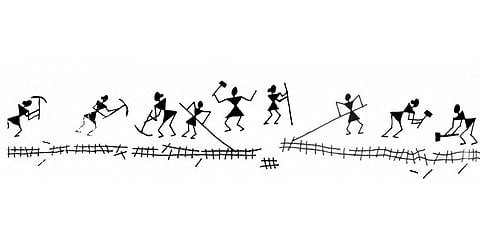Those who deny that caste is really much of a 'problem' should look at the case of Chitralekha. She is a Dalit (Pulaya caste) woman in Payannur in Kerala, married to an Other Backward Caste man. In 2003, she decided to take up the profession of autorickshaw driving (as her husband does), since the nursing course she was in training for required night work, which would have impeded on her ability to care for her children. Since then, she has been constantly harassed by the 'caste Hindus' who dominate the Communist Party of India (Marxist) autorickshaw union. Her autorickshaw was torched; then a new one was also ruined by having salt poured into its gas tank. Finally, she herself was beaten by a mob working with the police. When we talked to the aggressive members of the union in the local CPM office, they refused to even recognise Chitralekha's marriage, calling her a "woman who lives outside the tracks". After all, she and husband, Sheeshkant, had committed what the 'sacred books' call varna-samkara, mixture of castes.
Outside the tracks? The tracks are those that bear the still-very-alive caste system in India. The train that runs on those tracks is a gloomy one, driven by the power of the Vedas, the Manusmriti, even the Gita. At its head is the Brahmin engine, followed by other of the sacred 'twice-born'. Behind, without much power to influence its running, swung along by the wily engine, are the Shudra carriages – divided from one another for, as B R Ambedkar noted, "Caste is not a division of labour, it is a division of labourers." Different Shudra jatis are not supposed to intermarry or 'inter-dine', and even today violations of these codes evoke penalties in many of India's villages. The caboose is that of the Dalits, tagging along at the end. Running at the side, perhaps, can be said to be the Adivasis, the marginalised, with Brahmin hands reaching out to drag them along with the train. And sitting in every carriage, often with curtains around them, with inferior food and sleeping space and clothing, are the women of each caste.

